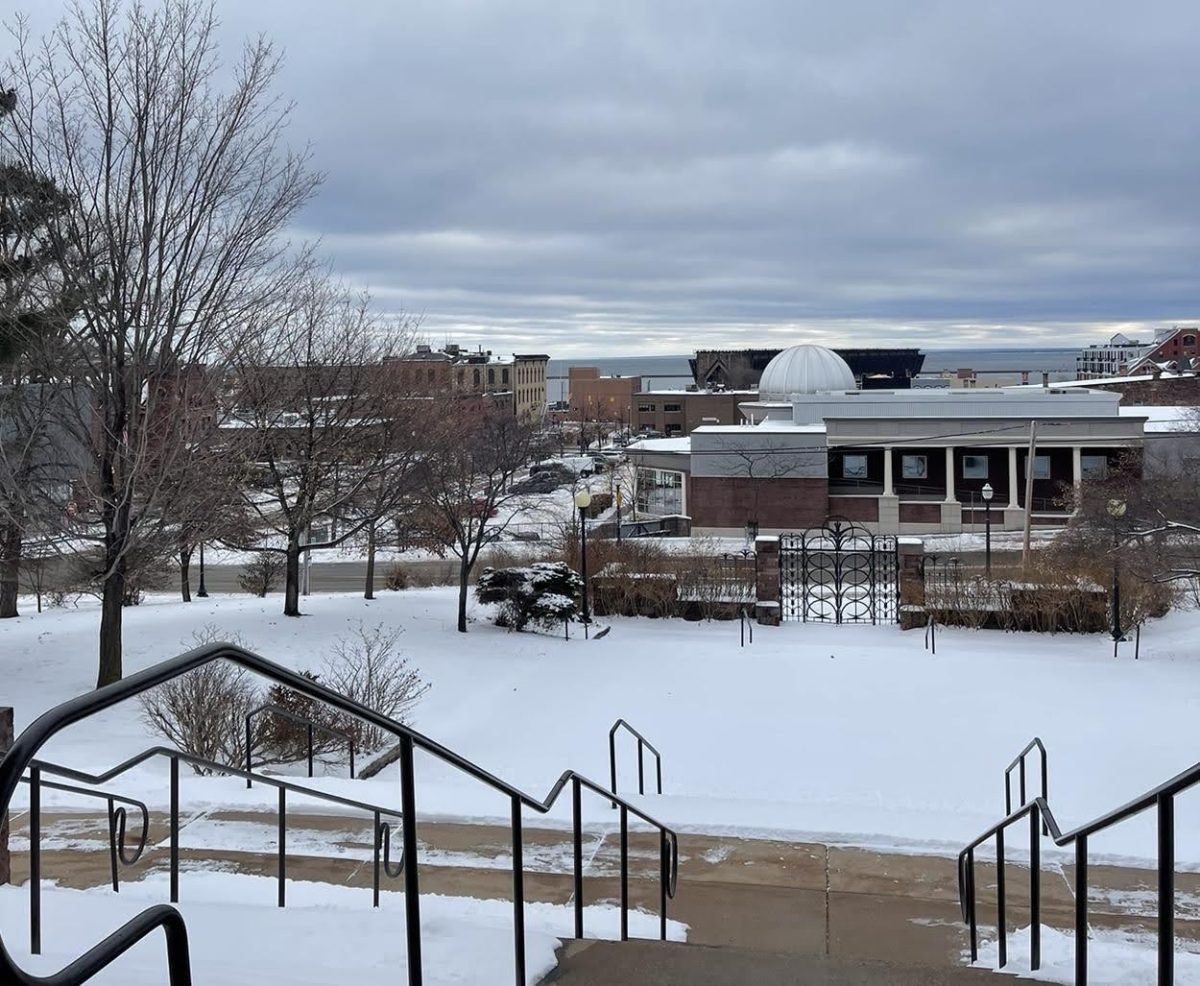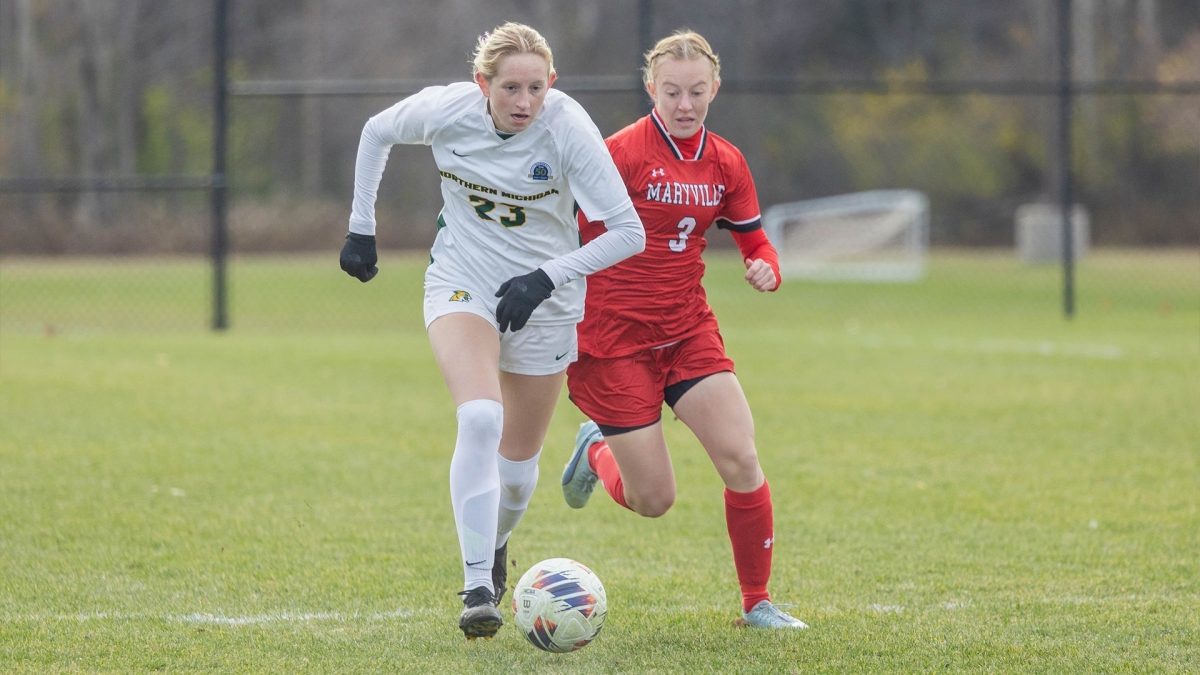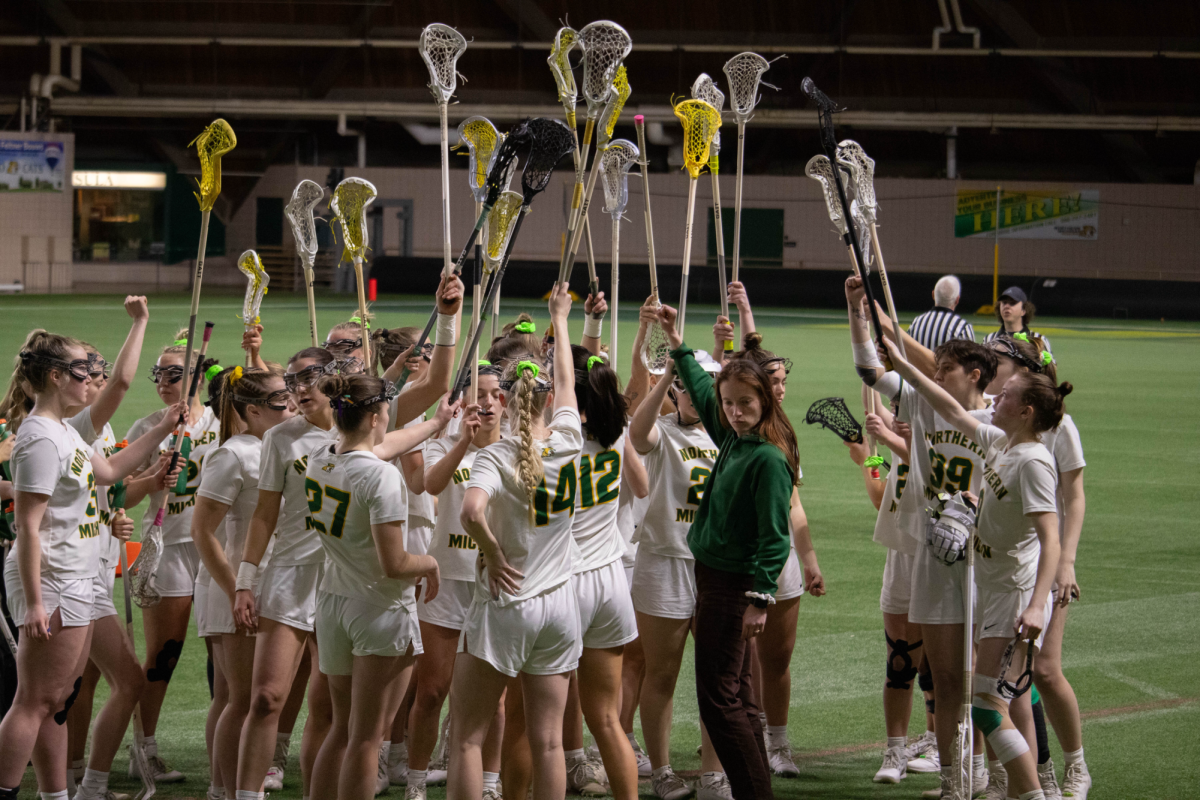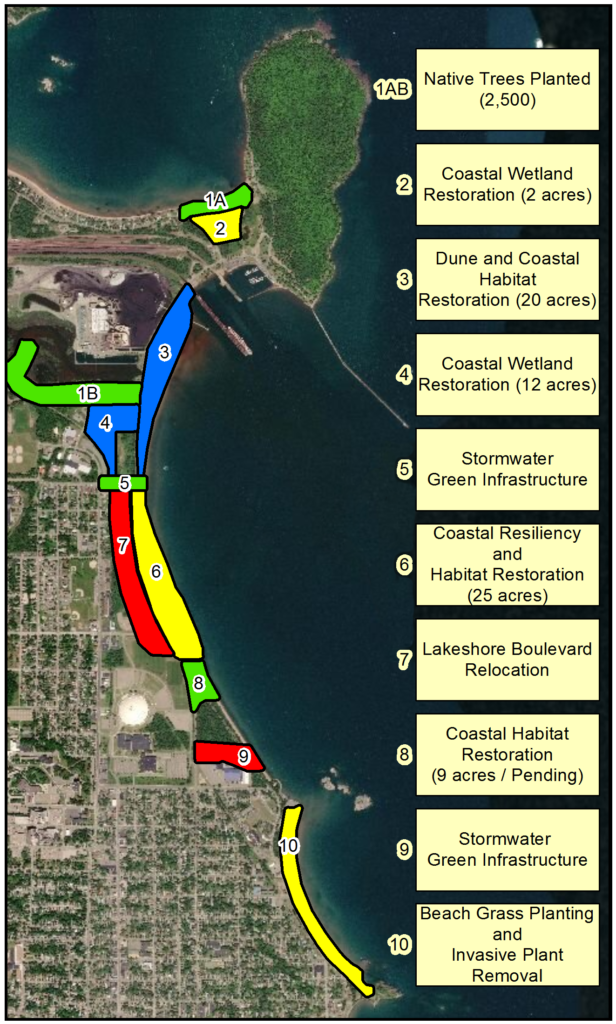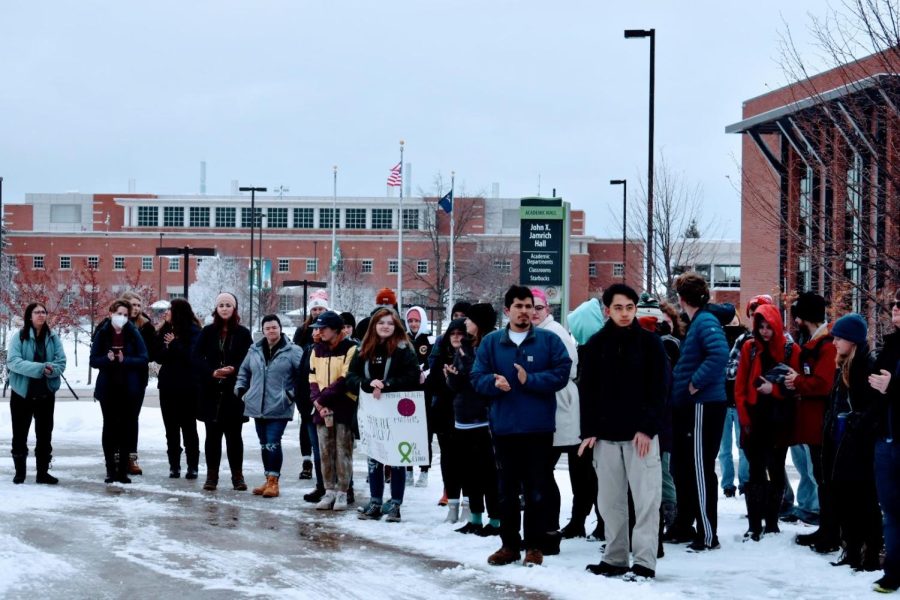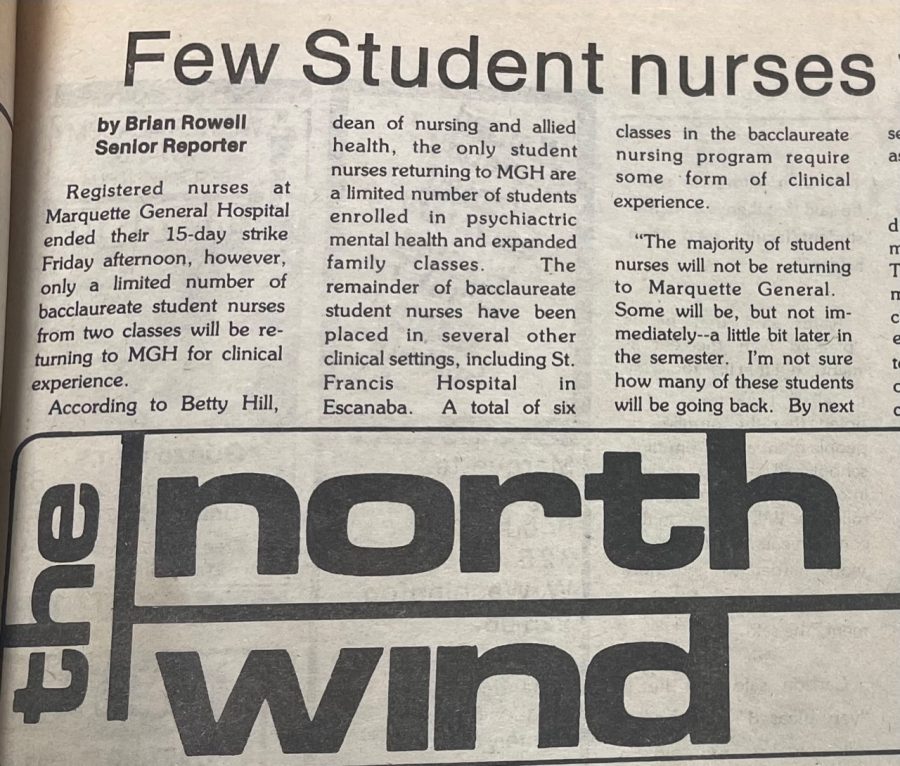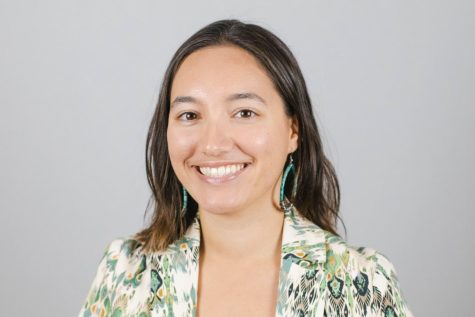Director of Community Development Dennis Stachewicz kept an eye on the Lake Superior shoreline throughout his 18 years working for the City of Marquette. He watched as the lake rose 3 feet in seven years and as warmer water temperatures led to increased and more severe storms that began to erode away the coastline and roads.
“The city of Marquette had fought the erosion back with placement of … some big rocks and things like that but that broke down eventually over time,” Stachewicz said. “And it got to the point where we were spending sixty thousand dollars a year … to go out and repair the roads.”
Many members of the community took note of the increasingly problematic erosion, including business professor Jessica Thompson and Carl Lindquist, the Director of Superior Watershed Partnership and Land Conservancy. Both of them serve on the steering committee for the Marquette Climate Adaptation Task Force and had been trying to figure out a solution for the damages caused by climate change for years.
“The Climate Adaptation Task Force has been talking about this [since] 2013 or 2014,” Thompson said. “That’s when we first started putting things on paper that said this is a climate priority for our community.”
The city, community members and environmental advocates all agreed that something needed to be done to address the coastal erosion along Lake Superior, starting with the moving of Lakeshore Boulevard.
The City of Marquette teamed up with the Superior Watershed Partnership and Land Conservancy, a Great Lakes non-profit organization that serves the U.P., and worked to come up with sustainable solutions for the shoreline. They also reached out to the members of the Marquette community for their input.
“We did a planning exercise with the community to develop several different options of what we could do there,” Stachewicz said. “As a result of that project in 2014, the community had decided that we were going to relocate the road and we were able to get a second coastal zones management grant to do the actual design. Our engineering team did that design and then at that time we had, for lack of a better term, a shovel-ready project.”
All that was left to do was find a way to fund the estimated $12 million construction and renovation.
Then in the summer of 2018, storms washed out Lakeshore Boulevard until it was virtually impossible to use. Marquette could no longer continue to repair the road back to its original state.
“Until we lost the road almost completely two summers ago, we were spending anywhere from $5 to $20,000 a year just to maintain that little section of road which is about a mile,” City Manager Mike Angeli said. “That’s a lot to spend on such a short distance compared to the other roads we maintain in the city.”
In 2019, they received a grant from the Federal Emergency Management Agency to help fund the relocation of the road along with a $5 million grant from the National Fish and Wildlife Foundation that the city matched to about four million. The grant was a part of the first round of grant awards for the National Coastal Resilience Program aimed at restoring coastal communities.
“It’s an honor to get that funding,” Lindquist said. “We’re looking at it as what can we do here for other coastal communities in the Great Lakes … Lake Superior, Lake Michigan and Lake Huron are all facing record-high lake levels and severe coastal erosion issues in a lot of communities so we’re trying to incorporate practices that hopefully others can replicate in their communities.”
The first step in the restoration process was to move nearly 4,000 feet of Lakeshore Boulevard back 300 feet, on average, stretching all the way from Wright Street to Hawley Street. That construction was considered phase one of the project and is estimated to be completed by the beginning of October this year.
Phase two, on the other hand, is going to take a lot more than a few months of construction.
“Phase two is stabilizing the shoreline that’s eroding and restoring everything that’s between the shoreline and the new road,” Lindquist said. “That’s exciting because we’re restoring more natural conditions, restoring coastal wetlands, restoring dune and swale habitat, pockets of native trees, and of course we have a public bike path and handicap accessible paths that will be going through there.”
When it comes time to the actual restoration, SWP will be working with the Great Lakes Conservation Corps which is mostly made up of NMU students or recent graduates in the environmental fields. They will help with planting native plant species, wetland restoration and trail work.
Not only will these areas provide water filtration and flood barriers to the shoreline, but will add natural beauty to an already glittering coast. This portion of the project is expected to be started in the spring and completed or open to public access by the fall of 2021.
But even with the entire restoration project only halfway complete, the response from Marquette to the newly paved road sections has already been astounding.
“The community feedback has been very, very positive,” Stachewicz said. “One of the barometers for me is the Facebook mom and the mob mentality on social media … we’ve been tracking it and I’ve seen nothing but positives. There’s Facebook Live videos where people drive down the coastline talking about how great it looks and what a worthwhile project and so on and so forth.”





